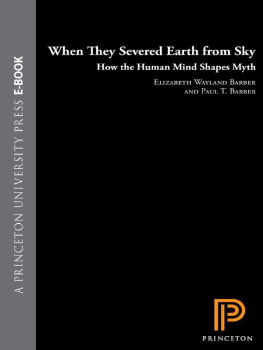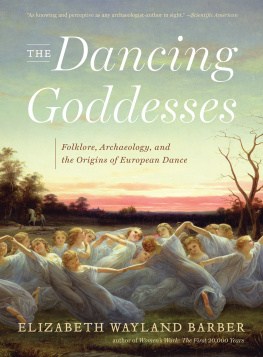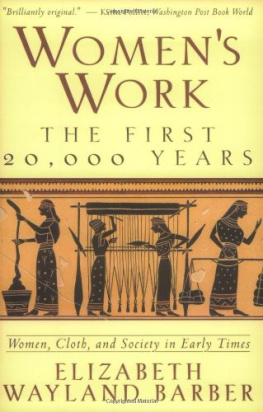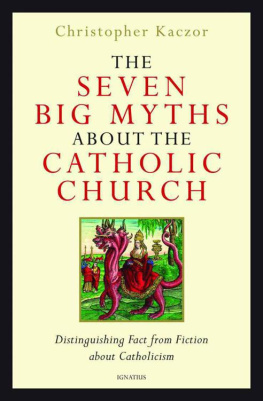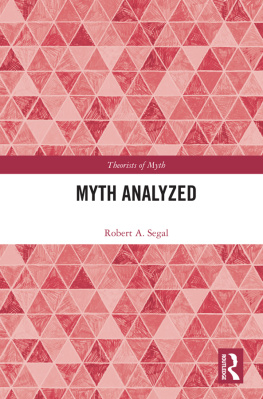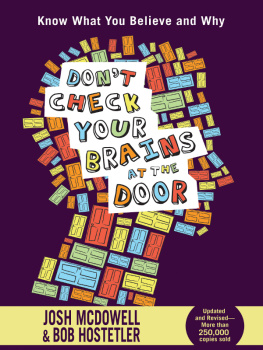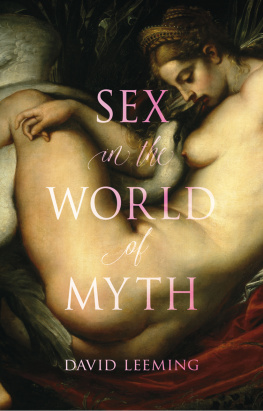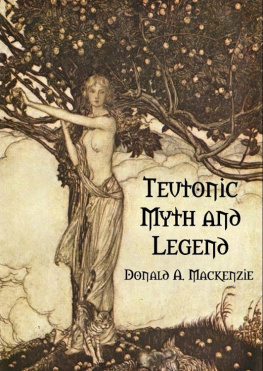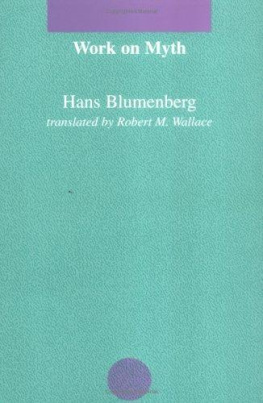
Frontispiece: Prometheus bound, his liver pecked by an eagle, observed by Atlas(?). Laconian black-figure cup by Arcesilas Painter, ca. 550 B.C.; Caere.
Elizabeth Wayland Barber
and Paul T. Barber
When
They Severed
Earth from Sky
How the Human Mind
Shapes Myth

PRINCETON UNIVERSITY PRESS
PRINCETON AND OXFORD
Copyright 2004 by Princeton University Press
Published by Princeton University Press,
41 William Street, Princeton, New Jersey 08540
In the United Kingdom: Princeton University Press,
3 Market Place, Woodstock, Oxfordshire OX20 1SY
All Rights Reserved
ISBN: 0-691-09986-3
Library of Congress Cataloging-in-Publication Data
Barber, E.J.W., 1940
When they severed earth from sky: how the human mind shapes
myth / Elizabeth Wayland Barber and Paul T. Barber
p. cm.
Includes bibliographical references (p.) and index.
ISBN 0-691-09986-3 (alk. paper)
1. Myth. 2. Mythology. I. Barber, Paul, 1941-II. Title.
BL312.B37 2005
201.3dc22 2004046640
British Library Cataloging-in-Publication Data is available
This book has been composed in Adobe Caslon
Printed on acid-free paper.
www.pup.princeton.edu
Printed in the United States of America
1 3 5 7 9 10 8 6 4 2
To Cassandra
and to Scotty
for his encouragement
Nor can we, in this age of Dictionaries, and other technical aids to memory, judge, what [History's] use and powers were, at a time, when all a man could know, was what he could remember. To which we may add, that, in a rude and unlettered state of society the memory is loaded with nothing that is either useless or unintelligible; whereas modern education employs us chiefly in getting by heart, while we are young, what we forget before we are old.
Robert Wood, Essay on the Original Genius of Homer , 1767 [Parry 1971, xiii]
CONTENTS
ILLUSTRATIONS
The astronomical diagrams were designed by E. Barber and executed by Bob Turring of Caltech and Dimitri Karetnikov of Princeton University Press. All photos and drawings, unless otherwise noted, are the authors' own.
Frontispiece: Prometheus bound, his liver pecked by an eagle, observed by Atlas(?). Laconian black-figure cup by Arcesilas Painter, ca. 550 B.C.; Caere. [Museo gregoriano Etrusco 16529; photo Vatican Museums.]
ACKNOWLEDGMENTS
We wish to thank Ann Peters, Adrienne Mayor, Joshua Katz, Michael Corballis, and C. Scott Littleton for their kind and patient help reviewing the whole manuscript at some stage and for providing numerous helpful references; likewise Floyd McCoy and Stuart Elliott for reviewing some of the geology and astronomy, respectively; Alan Ferg for other interesting references; John Pohl for electronically stitching together two photos for (the rock crevice is too narrow to photograph the sword god clearly with one shot); and in particular C. Scott Littleton for hounding us for over twenty years to keep working on this project, and for field-testing part of the book in his class. We of course take full responsibility for our opinions and any errors of fact.
We also wish to thank the University of California Press for permission to reprint the story of Crater Lake from Ella Clark's Indian Legends of the Pacific Northwest [1953] in ); and Tony Battaglia for letting us photograph his Shiva. Many thanks to the Louis and Hermione Brown Humanities Support Fund for underwriting the cost of producing the astronomical diagrams. All translations, unless otherwise noted, are our own.
Time Capsules

The son of Danaslew the Gorgon, and, bearing her head adorned with locks of serpents, came to the islanders bringing them stony death. But, to me, no marvel, if the gods bring it about, ever seems beyond belief.
Pindar, Pythian Ode 10 (trans. Race 1997, 363)
E vidence shows that people have had brains like ours for at least 100,000 years. By that time, as the excavated bones show, our vocal tract had developed for speech as we know it [Lieberman 1975, 1991]; and language could not have come into being without both an efficient vocal mechanism and the complexly structured brain necessary for language.
But if people were so smartjust like us100,000 years ago, why do the myths they passed down often seem so preposterous to us? And not just to us. Even ancients like the Greek poet Pindar, who made his living telling such stories ca. 500 B.C., sometimes felt constrained to a disclaimer: Don't blame me for this tale! The narrators present these myths as histories. Yet how can we seriously believe that Perseus turned people to stone by showing them the snaky-locked head of a monster, or that a man named Herakles (or Hercules) held up the sky for a while, slew a nine-headed water monster, moved rivers around, and carried a three-headed dog up from the land of the dead? Or that a man named Methuselah lived for almost a millennium? That an eagle pecked for years at the liver of a god tied to a mountain, or that mortal menBeowulf, St. George, Siegfried, and Perseus includedactually fought dragons? And how can one view people like the Greeks or the Egyptians, who each believed simultaneously in three or four sun gods, as having intelligence? Didn't they notice a contradiction there? Why did people in so many cultures spend so much time and attention on these collections of quaint stories that we know of as myths?
The problem lies not in differing intelligence but in differing resources for the storage and transmission of data. Quite simply, before writing, myths had to serve as transmission systems for information deemed important; but because wenow that we have writinghave forgotten how nonliterate people stored and transmitted information and why it was done that way, we have lost track of how to decode the information often densely compressed into these stories, and they appear to us as mostly gibberish. And so we often dismiss them as silly or try to reinterpret them with psychobabble. As folklorist Adrienne Mayor points out, classicists in particular tend to read myth as fictional literature, not as natural history [Mayor 2000b, 192]not least because humanists typically don't study sciences like geology, palaeontology, and astronomy, and so don't recognize the data.
In order to understand how and why myths were constructed to encode real and important data, we must come to understand the possibilitiesand hazardsfor the collection, processing, and transmission of information in nonliterate societies. Just how much can you keep in your head? Simply put, writing allows people to stockpile data in masses that are not possible when one must rely on memory alone, and it allows people to transmit as much as they wantwithout much compressionto future generations. Conversely, without writing, people had both to winnow out the key information, presumably according to perceived importance, and to compress it by any means possible until it fit into the available channel: human memory. We have come to term this overarching problem the Memory Crunch.
During two dozen years of empirical research on myths from all over the world, we found that many of these stories could be understood through a series of simple observable principles. These principles show how particular types of myths developed out of actual events: how people crunched down the information into the limited channel available for transmission, enhanced its memorability, then shot these little time capsules of knowledge down the pipeline to the listeners of the future.
Not all myths are of this type, of course, but many more of them turn out to stem from actual events and real observations of the world than twentieth-century scholars have commonly believed, and possibly all types of myths can be understood better through understanding the close relationships between myth, language, and cognition. At any rate, myths encoding verifiable facts proved the easiest place to begin recognizing the cognitive processes involved.

